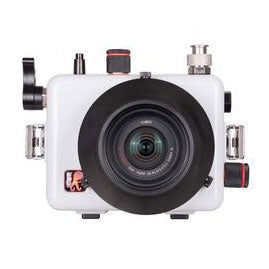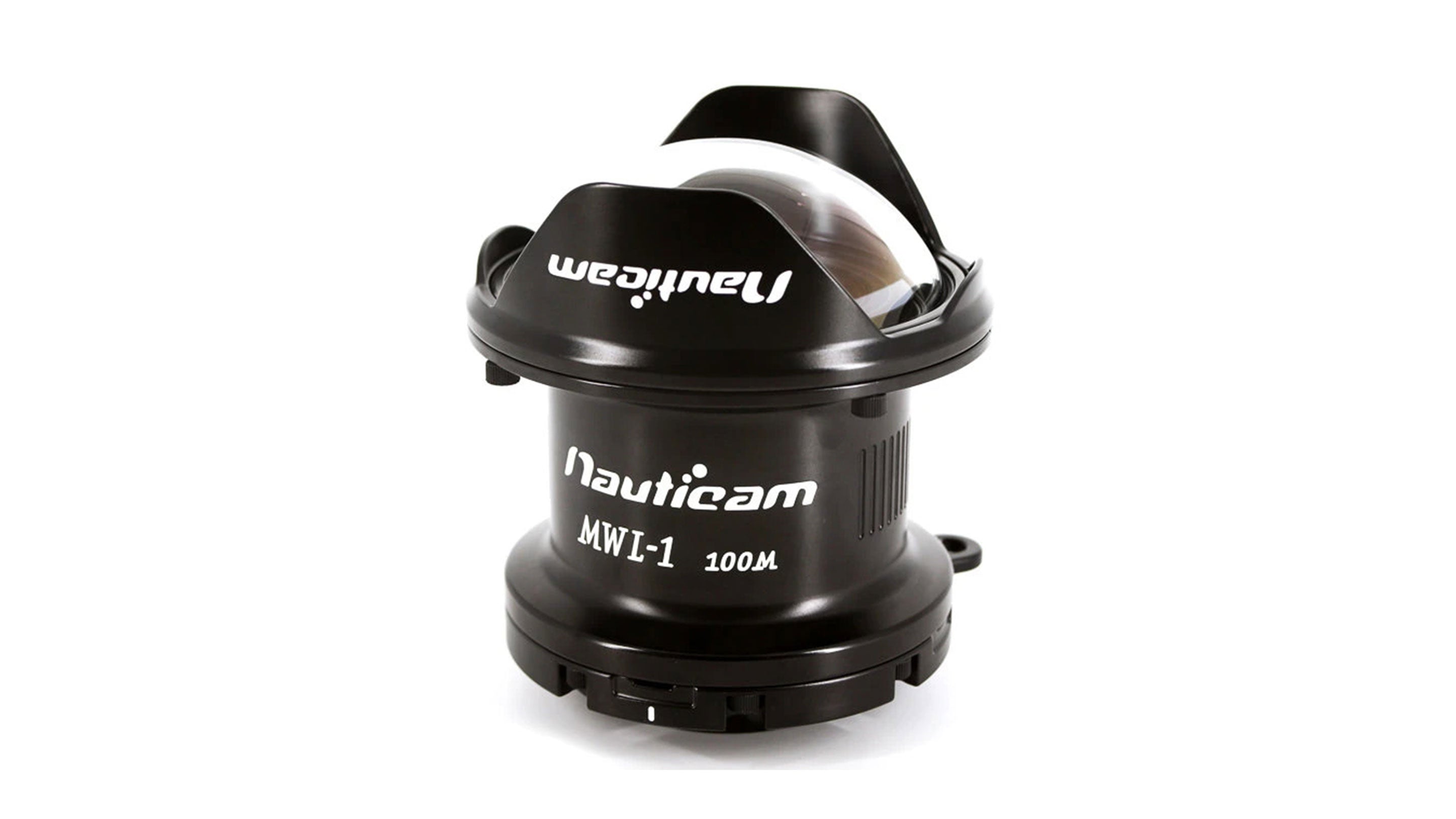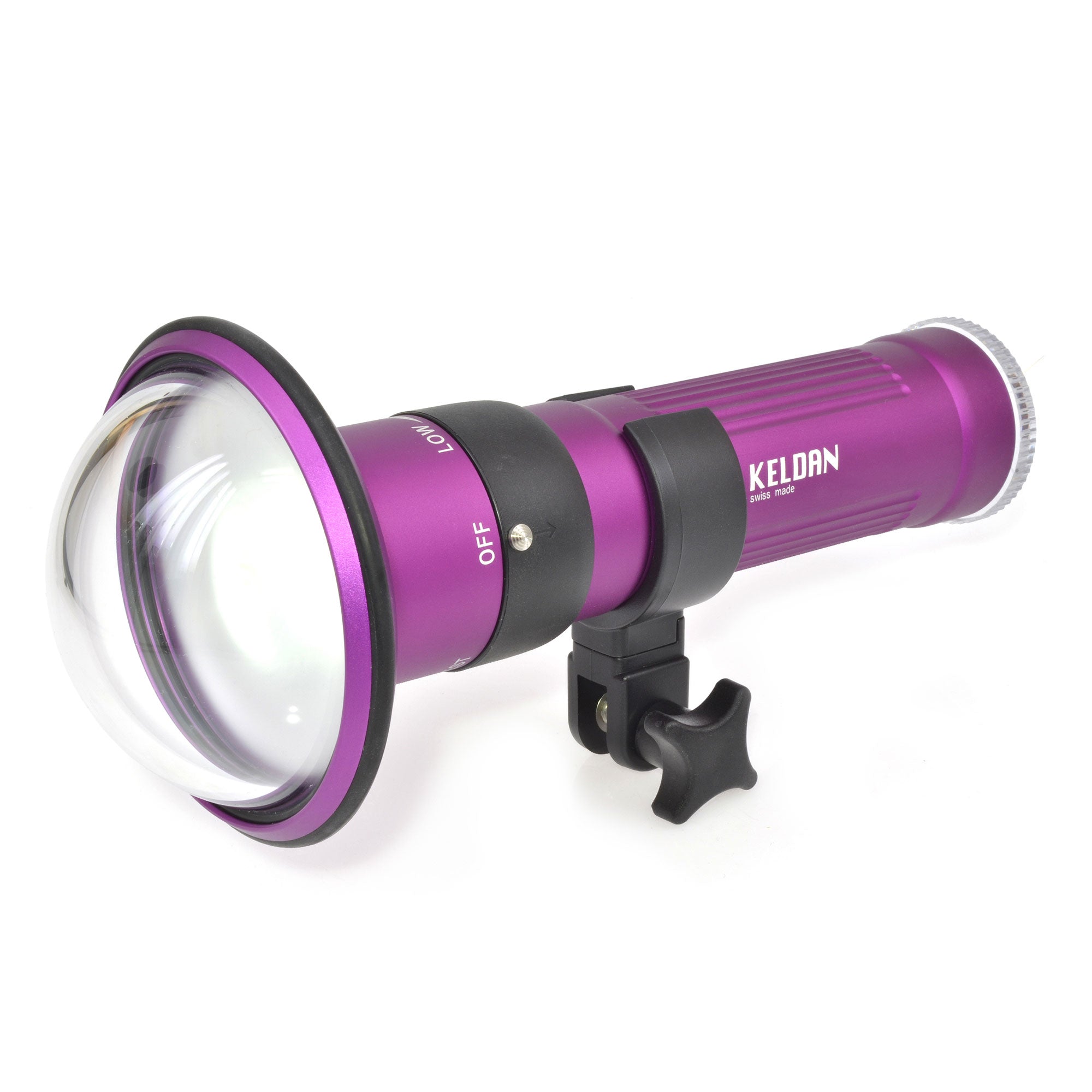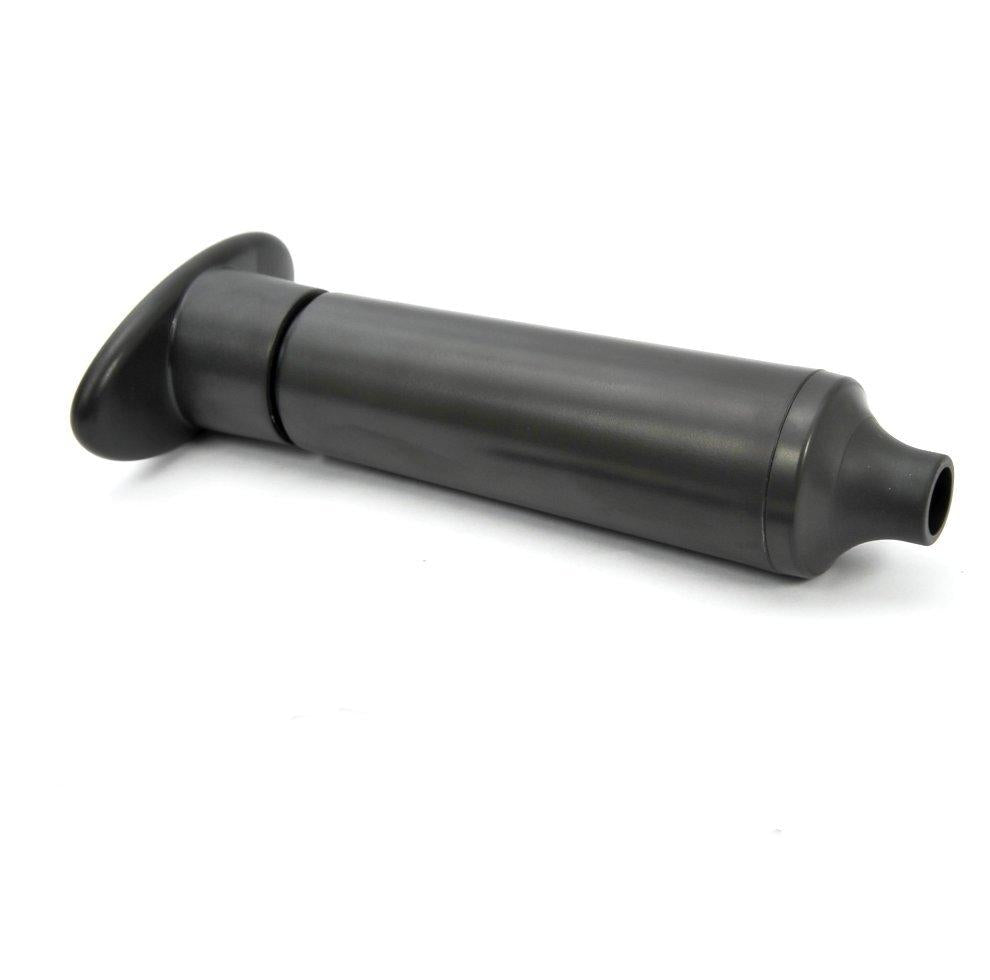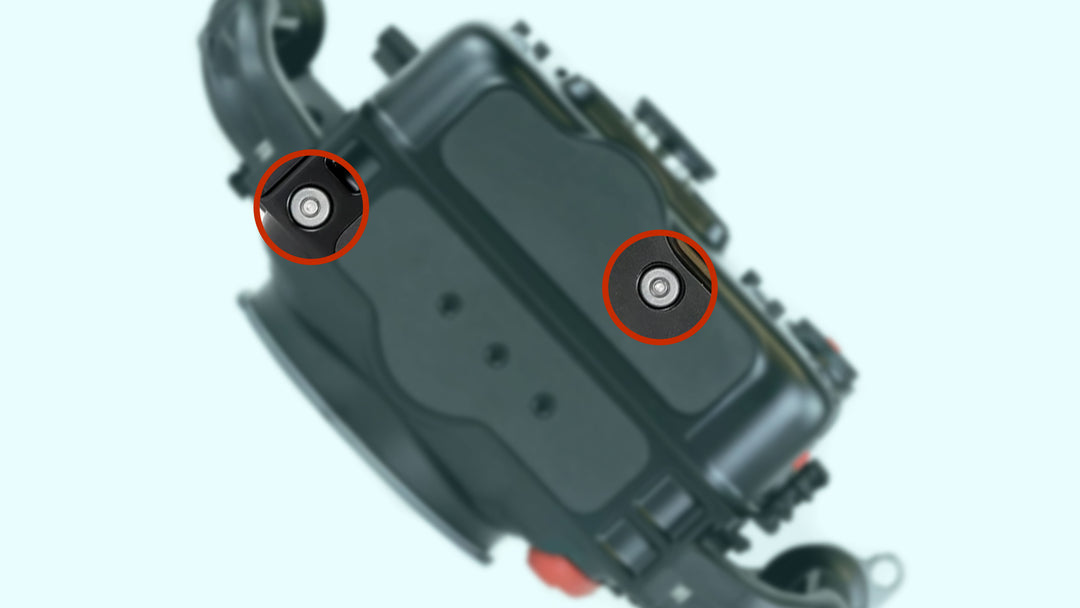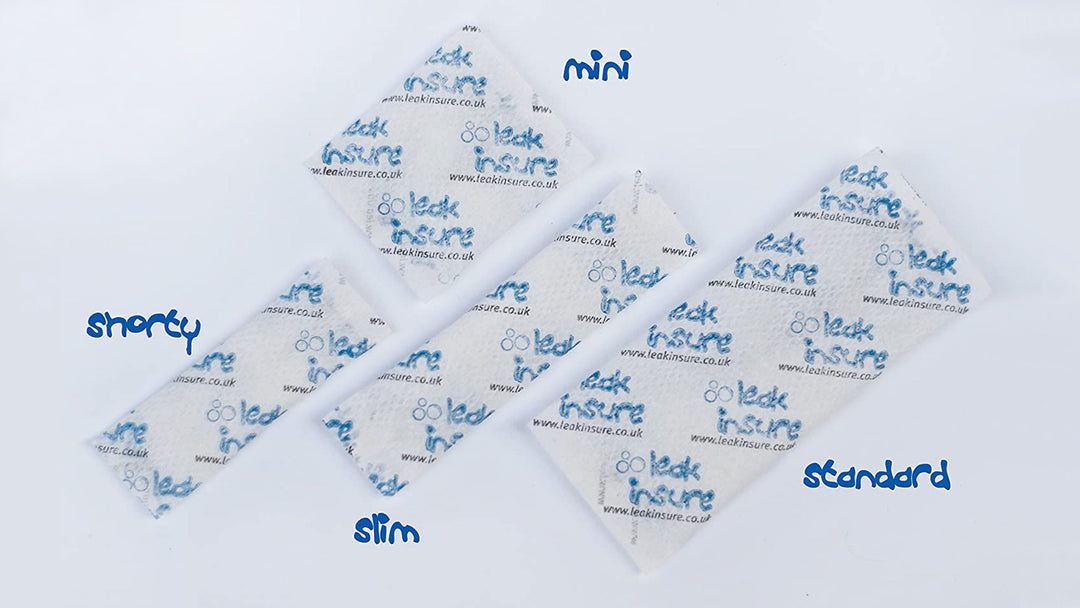- Custom Designed to fit in Nauticam Full Frame Housings
- Custom Designed to work with Sony Cameras
- TTL Compatible with Hybrid Flash
- HSS with all HSS Compatible Strobes
- 13 Hour Run Time
- USB-C Rechargeable
See Below for Important Configuration Info for your housing.
DOWNLOAD INSTRUCTION MANUAL
Choose Your Configuration
The Backscatter Smart Control Optical TTL Flash Trigger is available in different configurations depending on your camera and housing. The universal triggers for Sony and Olympus/OM System are designed to fit into most housings and can use either single or dual LED trigger lights. The dual LED trigger lights are perfect for housings that accept LEDs in built-in optical ports or when used with the included foam blocks on a clear housing window. The single LED Trigger Light can be used with the optional bulkhead for a more direct fit. Utilizing built in LED trigger lights, the Nauticam Sony Trigger is custom designed for an exact fit in Nauticam full-frame Sony housings.
Sea Tech has the Smart Control TTL LED Nauticam Flash Trigger for Sony in stock. If you require any other Backscatter triggers, contact us and we can make arrangements for you.
|
Installing the Backscatter Smart Control Optical TTL Flash Trigger
Nauticam Sony Trigger Installation
The Nauticam Sony Trigger was custom designed to fit directly into Nauticam full-frame Sony housings. To install it, simply slide the trigger onto the camera’s hot shoe, then load the camera into the housing. The LED trigger lights align with the optical ports inside the Nauticam housing for triggering.
The Backscatter Smart Control Optical TTL Flash Trigger for full-frame Sony Nauticam housings is a direct fit.
PRO TIP: For the best data transmission, only use 613 multicore Fiber Optic Cables with the Backscatter Smart Control Optical TTL Flash Trigger, such as those made by Backscatter, Nauticam, and Sea & Sea.
The Backscatter Smart Control Optical TTL Flash Trigger provides super-accurate, automatic flash exposures with Sony cameras using Backscatter strobes. The Sony trigger is TTL compatible with the Hybrid Flash. The Backscatter Smart Control Optical TTL Flash Trigger is more than just a TTL trigger, it also can be used for manual triggering, rapid firing over 30 frames per second, and HSS (high speed sync), all built into a self-contained USB-C rechargeable unit.
Smart Control Optical TTL for the Most Accurate Results
Underwater systems utilize different methods to achieve TTL through a camera, housing and strobe, including hardwired TTL, digital optical TTL, and S-TTL (slave or mimic TTL). The Backscatter TTL trigger uses a digital optical system in the form of Smart Control Optical TTL, which is a proprietary TTL system, to achieve accurate results.
Here are the different TTL systems explained:
Direct Electronic Connection (Hardwired) and Digital Optical TTL
Direct electronic connection (hardwired) and digital optical TTL are the most accurate methods of automatic flash exposure. With these two types of TTL, the camera has a direct line of communication to the strobe. Hardwired TTL uses electronic cables and bulkheads, while digital optical TTL sends a computer code signal from the flash trigger through a Fiber Optic Cable to the flash. This works similarly to fiber optic telecommunications systems.
Since digital optical TTL uses Fiber Optic Cables, it is less maintenance intensive than hardwired systems, as you do not need to clean, grease and inspect multiple cable o-rings to prevent leaks that could compromise the system. Fiber Optic Cables are also inexpensive, lighter and far more common compared to electronic sync cables. Backscatter’s Smart Control TTL mode uses digital optical TTL for accurate results. Smart Control Macro mode brings an even higher level of accuracy for close up TTL shooting. Other TTL systems, both topside and underwater, can sometimes struggle with accurate exposures at closer distances (eighteen inches and closer) especially with wide-open apertures.
Slave or Mimic TTL
Slave or mimic TTL copies the duration of the camera’s built-in flash or duration of the LED trigger. While this can get into the ballpark of an accurate exposure, it is not as consistent as direct electronic connection or Smart Control Optical TTL. Strobes that use slave or mimic TTL are not compatible with the Backscatter TTL trigger, since it uses digital optical TTL language.
Smart Control - Perfect Flash Power For Scenes Big and Small
Smart Control (SC and SC Macro) are the TTL modes for the Mini Flash 2 and Hybrid Flash. Standard Smart Control mode is perfect for wide angle and larger subjects, while Smart Control Macro will tailor the flash output specifically for macro shooting. Smart Control Macro mode is unique to the Mini Flash 2 and Hybrid Flash. Other TTL systems struggle to accurately expose close-up subjects, typically resulting in an overexposed image. With Smart Control Macro mode, both the Mini Flash 2 and Hybrid Flash will precisely light the closest scenes and smallest subjects, without blowing out the image.

The Hybrid Flash and Mini Flash 2 both use SC and SC Macro mode when using TTL.
The Benefits of Automatic Flash Exposure
All TTL systems, including Smart Control Optical TTL, have major benefits for photographers of all skill levels. Here are some of the main use cases in which using TTL is beneficial.
Flattening the Learning Curve for New Photographers
Using TTL, flash power is automatically controlled, meaning no manual adjustments are needed to change flash power. For beginners, this makes practicing other fundamental skills such as strobe positioning or changes in camera settings less overwhelming. When using TTL, all you have to do is aim the flash, and concentrate on composition, making using a flash much more accessible to new photographers.
Changing Distances
TTL is perfect for subjects that are moving distances, as there is no need to make manual flash adjustments. When shooting manually, strobe power must be adjusted if the subject moves closer or farther away. If the subject moves closer, strobe power should be decreased to prevent overexposure. If the subject moves farther away, strobe power needs to be increased to reach the subject and prevent underexposure. Using TTL, the flash automatically adjusts power to compensate for the movement of the subject, ensuring correct exposure.
Rapid Settings Changes/Surprise Encounters
In addition to being great for novices, photographers of all experience levels will appreciate TTL for surprise encounters or when rapid camera settings changes are necessary. When rounding a corner and suddenly facing a subject, there may not be enough time to adjust strobe positioning, power, and camera settings if unprepared for the encounter. With TTL, flash power is automatically adjusted, allowing more time to capture the shot during fleeting moments.
Max Flash Output Warning
When the Hybrid Flash and Mini Flash 2 reach maximum flash output, they will sound a warning beep. This makes shooting TTL even easier by providing you with instant feedback if the max power of the flash is reached. If the flash beeps, and the resulting image is underexposed, get closer, or change camera settings to get back into the range of the strobe’s output.
Smart Control Optical TTL can easily and accurately create an automatic exposure. Even if you or your subject changes position, the flash will compensate for the exposure. When shooting with manual flash power, you will need to manually increase or decrease power based on distance from the subject.
Sony a1 | Canon 8-15mm Lens | 1/400 | ISO 100 | ƒ8
TTL Limitations & When to Switch to Manual
TTL works great for most situations, however, there are some limitations to using TTL. This is true for all TTL systems, not just Smart Control Optical TTL.
TTL has one exposure for all strobes being used. If one strobe is closer to the subject than the other, you will need to shoot manually since the strobes will need to be set to different outputs based on their distance. The closer strobe will need to be set to a lower power, to not overexpose the subject, while the strobe that is farther away, will need to be set to a higher power, to reach and expose the subject. If shot in TTL, one strobe will be underexposed or overexposed based on distance.

For an even exposure with strobes set at different distances, you will need to manually decrease the power of the closer strobe and increase the power of the farther one, in order to not over or underexpose your scene.
Since TTL uses multiple pre-flashes, it will trigger slower than manual shooting, and can reach up to three frames per second depending on strobe output levels. Manual triggering, which uses just a single flash, can achieve over 30 frames per second. If you’re looking to shoot rapidly to capture as many frames as possible, manual shooting is the way to go.
Setting up the Mini Flash 2
Smart Control TTL with the Mini Flash 2 is only compatible with the Olympus/OM trigger. Simply set the Mini Flash 2 to SC or SC Macro mode, and you’re good to go.
Setting up the Hybrid Flash
The Hybrid Flash can be configured to work with either Olympus/OM or Sony TTL. By default, the Hybrid Flash is set to Olympus/OM but can easily be changed to Sony. If you are using the Sony trigger, refer to page 15 of the Hybrid Flash manual or watch the setup video for an easy tutorial. This explains how to switch between OM/System and Sony TTL modes and Sony camera models. Once the Hybrid Flash is configured with your camera, you won’t have to change modes again.
The Hybrid Flash can easily switch from Olympus/OM System TTL to Sony TTL. Watch our setup guide videos or read the Hybrid Flash manual for instructions on changing TTL mode and Sony camera models.
Required Camera Settings for TTL
Sony cameras will require simple settings changes in order to use SC Mode TTL with the Backscatter Smart Control Optical TTL Flash Trigger. The settings are easy to change. You can also easily switch between TTL and manual flash operation underwater for maximum flexibility. Please refer to page 10 of the Mini Flash 2 PDF manual and Page 14 of the Hybrid Flash PDF manual for detailed instructions or watch the Sony Trigger setup videos.
Advanced Settings and Features
Flash Exposure Compensation
The Hybrid Flash and Mini Flash 2 use in-camera flash compensation for convenient adjustments to your image. In-camera flash compensation is easier to manage than using strobe controls. This way, you don’t have to set the flash’s power dial in a neutral position, which is easy to forget, or misplace, causing inaccurate results. Using flash compensation in-camera allows you to brighten or darken the image by either increasing or decreasing flash compensation for a specific style. Positive flash compensation will result in brighter, high key images, while negative flash compensation will create a darker, moodier image. To learn how to use in-camera flash compensation, refer to your camera’s manual or check out the video.
Sony Flash Compensation

In camera flash compensation easily allows you to darken or brighten your image, without adjusting the flash’s physical control.
Switching to Manual
The Backscatter Smart Control Optical TTL Flash Trigger can also be used manually when shooting the Mini Flash 2, Hybrid Flash, or any other strobe capable of manual flash control. To do this, turn RC mode off when using Olympus/OM System Cameras or turn Wireless Flash On when using Sony.
PRO TIPS: If you plan on switching between TTL and manual, use custom buttons or custom menu banks to easily switch between manual and TTL, without needing to continually hunt through the menu.
When using manual flash control with the Hybrid Flash, we recommend turning off learning mode in order to easily take advantage of rapid fire shooting. To turn off learning mode see page 12 of the Hybrid Flash manual or watch our video on learning mode.
HSS (High Speed Sync)
The Backscatter Sony trigger supports HSS with Hybrid Flash, Mini Flash 2, and third party HSS strobes such as the Retra Flash Pro Max. High Speed Sync allows the camera to sync with the flash beyond the native flash sync speed limit, up to 1/8000. For directions on setting up your camera and flash to use HSS, check out page 18 of the Hybrid Flash manual, page 12-13 of the Mini Flash 2 manual, or watch our setup videos for the OM/System and Sony TTL Flash Trigger.

HSS allows you to capture shallow depth of field images while still maintaining a dark background.
Olympus E-M10 IV | Olympus 60mm Lens | 1/3,200 | ISO 200 | ƒ2.8
SPECS
- Model Number: BS-TR-SN2
- Description: Backscatter Flash Trigger For Nauticam Housings
- Compatible Camera Models: Sony Cameras (TTL , MANUAL, MANUAL HSS) / Other Cameras (Manual Mode only)
- Compatible Housing Models: Nauticam Full Frame Housings
- Compatible Lens Models: Sony & Canon Lenses* (*Recomended Metabones Lens Adapters) (Not Compatible Sigma MC-11 Adapter)
- Main Material: ABS
- Data Transmitters LED Type: High Power Infrared LED
- LED Data Transmitters: 2-Way LED
- Power Consumption: 40mW
- Battery Power: Built-in Rechargeable Lithium Polymer Battery (3.7V 110mAh)
- Battery Charging: By USB Charger DC5V, 0.5A Approx. 2 hours for a full charge
- Battery Operation Time: 13 Hours
- Auto Standby Time: Use With Sony Camera: follows camera’s standby state / Use With Other Camera : 1 minute
- Dimensions: 43 x 27 x 21 mm / 1.7 x 1.1 x 0.8 inch
- Weight: 6.3 g / 0.57 oz1
- Accessories: EVA Carry Case, USB-C Charging Cable




